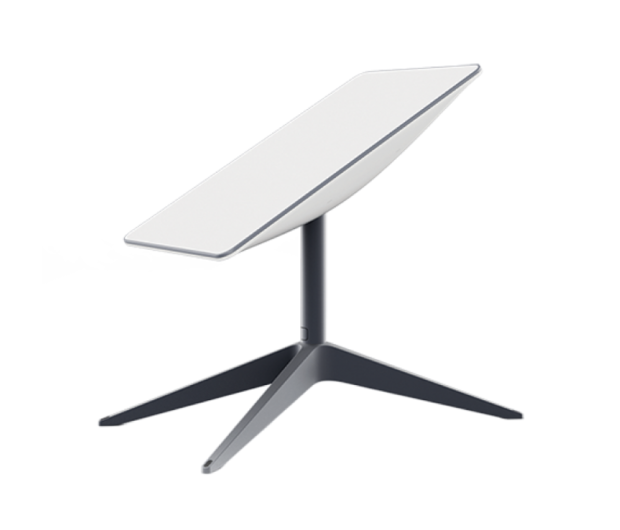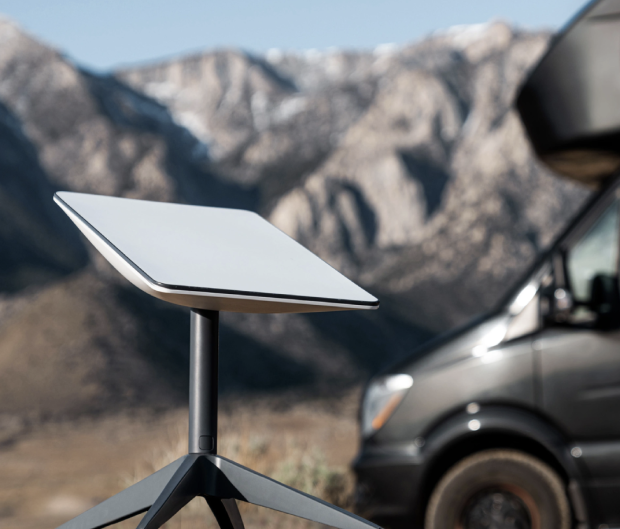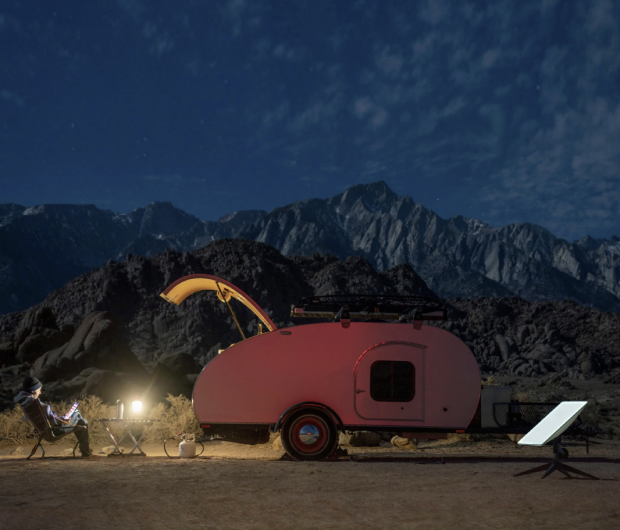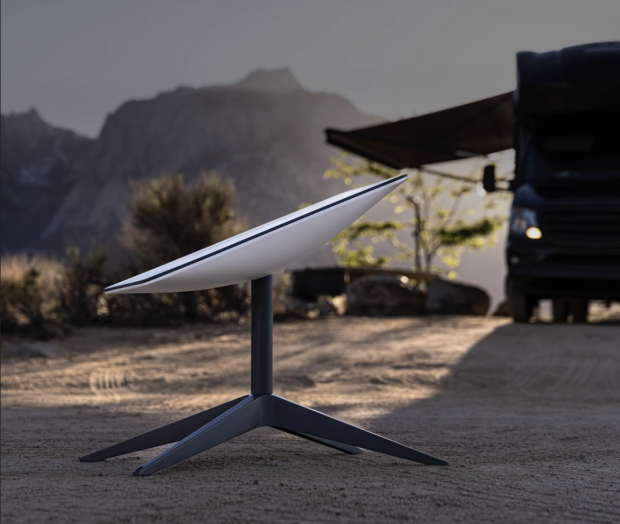While most of us crave the freedom of escaping beyond the clutches of cell and Wi-Fi service at least occasionally, many of us don't have that luxury given the nature of remote jobs and day-to-day responsibilities on the road. No matter the far-flung location, having fast, full-time access to the internet is often a must. That's why the current Starlink Internet system of products has become a game-changer for keeping people connected—anywhere, anytime.
Now, when you're rattling down a dirt road toward your favorite backcountry hideaway to disconnect, you can also reconnect at will. In 2015, when Elon Musk first announced the concept of Starlink, providing high-speed internet through a series of satellites to the most remote stretches of the world, it seemed unfathomable. Musk's SpaceX persisted, and a short five years later Starlink became available to the public. As of April 2023, Starlink is available in 53 countries.

What Is Starlink Internet?
Starlink is a satellite-based internet service that uses a collection of 3,660 satellites circulating in low orbit around Earth to connect dishes and routers. The number of satellites continues to grow as SpaceX launches more rockets into orbit. In fact, the company plans to eventually have 12,000 of them circulating 300 miles above Earth, at which point every country on the planet could share the same internet access.
Starlink dishes come in a box about the size of a Yeti Tundra 45 cooler. Setup is simple and well-explained through the Starlink app. Just pull out the instructions, assemble the dish, connect the cables, plug into power, and after 15 minutes of boot-up time, you have internet.
The only caveat: if the dish can’t access the sky, you'll need to move it to a Starlink-friendlier spot on your property.
Pros and Cons of Starlink Internet
Pros of Starlink
- You can live off the grid and stay connected.
- It increases safety, as you can request help without cell service if your smartphone can use Wi-Fi to make calls. Alternately, you can connect to the internet with a computer and make internet-based calls. In a worst-case scenario, you could make a video call to a friend and have them forward your distress call.
- You can access navigation anywhere.
- You can use it in motion with the Flat High Performance model.
- You can YouTube "DIY fix for broken fill in the blank" to make repairs on the fly.
- Starlink can download the GPS coordinates to your next camping spot if you're out of service and don't have maps.
- Running low on gas or EV charge, but GPS won’t load the nearest gas station? Set up Starlink to find some juice.
Cons of Starlink
- Internet doesn’t mean cell service, so you can’t make phone calls unless your phone can use Wi-Fi calling.
- Data restrictions might hold you back.
- You need power to run your Starlink system. Roam uses a significant amount of power in comparison to a household router. You'll likely need a solar generator to keep it powered up.
- Your dish needs to have a clear, unobstructed view of the sky.
- The entry cost will keep some individuals away.
- 30 GBs of data is okay for two people, but most likely not quite enough for four or more.
- Starlink is large, so making room for the dish in an already packed vehicle can be a challenge.

How Fast Is Starlink Internet?
Starlink can deliver internet speed from 50 to 200 Mbps, but network issues can hinder speed.
How Much Is Starlink Internet?
At the moment, there are five Starlink packages: Residential, Roam, Business, Aviation, and Maritime. All have various benefits and limitations. Roam, Aviation, and Maritime are unique in their ability to access the internet while moving. The aptly named Roam is far and away the best-suited Starlink package to road trippers of all types.
There are two separate fees with Starlink Roam service: the dish ($599) and a monthly service fee of $150 that lets you pause your service at any time (i.e. when you're not on the road). This gets you 30 GB a day, which I've found to be more than enough. Much like your cellphone service, you can make upgrades to get more if needed.
- Starlink Residential: Users are split into internet service areas of “limited capacity” and “excess capacity.” New pricing takes effect on April 24, 2023: $120/month for users in limited-capacity areas and $90/month for those in excess-capacity areas. You can sample Starlink service for 30 days and return the hardware for a full refund if not satisfied.
- Starlink Roam: Starting at $150/mo and a one-time hardware cost of $599.
- Starlink Business: Starting at $250/mo with a one-time hardware cost of $2,500.
- Starlink Aviation: Starting at $12,500/mo (up to $25,000/mo) with a one-time hardware cost of $150,000. Deliveries start in 2023.
- Starlink Maritime: Starting at $250/mo with a one-time hardware cost of $2,500.
Starlink Internet Upgrades
Right now, the main upgrades available are a permanent, in-motion dish and increased internet access for global service.
In-Motion Dish
The in-motion dish, named Flat High Performance, is permanently fixed to your vehicle, letting you access the internet wherever you drive. Think of it like your home internet, but attached to your van, RV, trailer, or overlanding setup. Price of the dish: $2,500.
As a solo adventure photographer who lives in a van and is using the $599 dish to write this article from the boonies, I feel the benefits of the in-motion dish are limited and unnecessary. I don’t stream movies while I drive, so why do I need high-speed internet on the go? Moreover, the dish is attached to your vehicle, which means if there's an obstruction to the dish, you'll have to move your rig instead of the dish. Lastly, if you want to leave behind your rig and still go to a remote place in another friend's overlanding vehicle, you can’t bring Starlink.
I can see a future use for this upgrade if, for example, I were to get rid of my cell phone provider and rely solely on Starlink. At present, I don't think the technology is ready for that—nor am I. It definitely could be of benefit for those with larger RVs packed with kids or passengers who need to work on the move.
Global Service
Priced at $200 a month, Starlink's global roaming plan upgrade provides access to every market available. If you're thinking about driving south of the border for cheap beers and endless waves, or overlanding through Africa in search of a pride of lions, this plan may be perfect for you.

How Will Starlink Change the Road Trip?
There's no doubt that Starlink Roam has changed the landscape of what's possible for road trippers and off-the-grid adventurers. Starlink is a tool that can increase the duration of a road trip, enable remote workers to get really remote while still pulling in a paycheck, and increase safety while on road trips by providing immediate access to emergency services. Plus, it takes "Netflix and Chill" to a whole new backcountry level.

Who Is Starlink Actually For?
Starlink isn’t just for remote workers and digital nomads. Families on road trips, researchers conducting experiments in remote and harsh environments, overlanding guides, retirees living in RVs, mountain guides who utilize basecamps, influencers living on the road, CEOs of expedition-based companies, hunting guides, and dirt bikers who love trail riding are just some of the benefitting clientele Starlink Roam can keep connected.
While poking fun at influencers is a favorite pastime of mine, I do think Starlink Roam will enable the creator economy to push their limits. With Starlink, creators can stay in remote locations longer, allowing them to send and receive large files without issues. Additionally, the daily demand of social media for influencers requires consistent access to the internet, so having the opportunity to post from anywhere in the world is a huge benefit.
Think about all your favorite rock crawlers, mountaineers, wildlife photographers, overlanders, big mountain skiers, and conservationists who can now bring their audiences closer to the action while building more support behind their work.
RVers, vanlifers, and overlanders will likely benefit the most from Starlink Roam, which seems tailored to wanderers with consistent power, a steady need or desire for the internet, and constantly changing locations that are often out of range of cell service.
Most likely, if you're road-tripping in a car, you won't have an adequate power supply to run your Starlink, while solar-powered or generator-based rigs will have the juice needed to keep the internet on. Starlink’s router and dish setup uses 1kWh per day on average. While this isn't substantial, a car battery won't cut it. Toting along a powerful solar generator could provide enough power on short trips in smaller vehicles, though.
The main challenge of traveling with previous internet providers was moving locations. Starlink has solved this challenge with its easy setup and hands-free connection. If there's an object obstructing the connection, you might need to move your dish, but you'll find this out in the app during the startup process and it will guide you to a more suitable location.
from Men's Journal https://ift.tt/4BjEbiY


0 comments